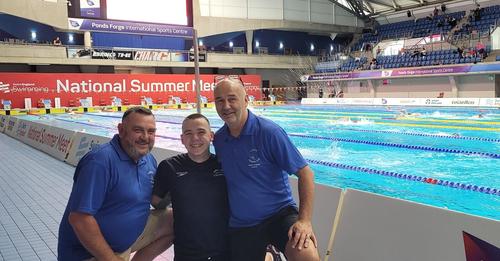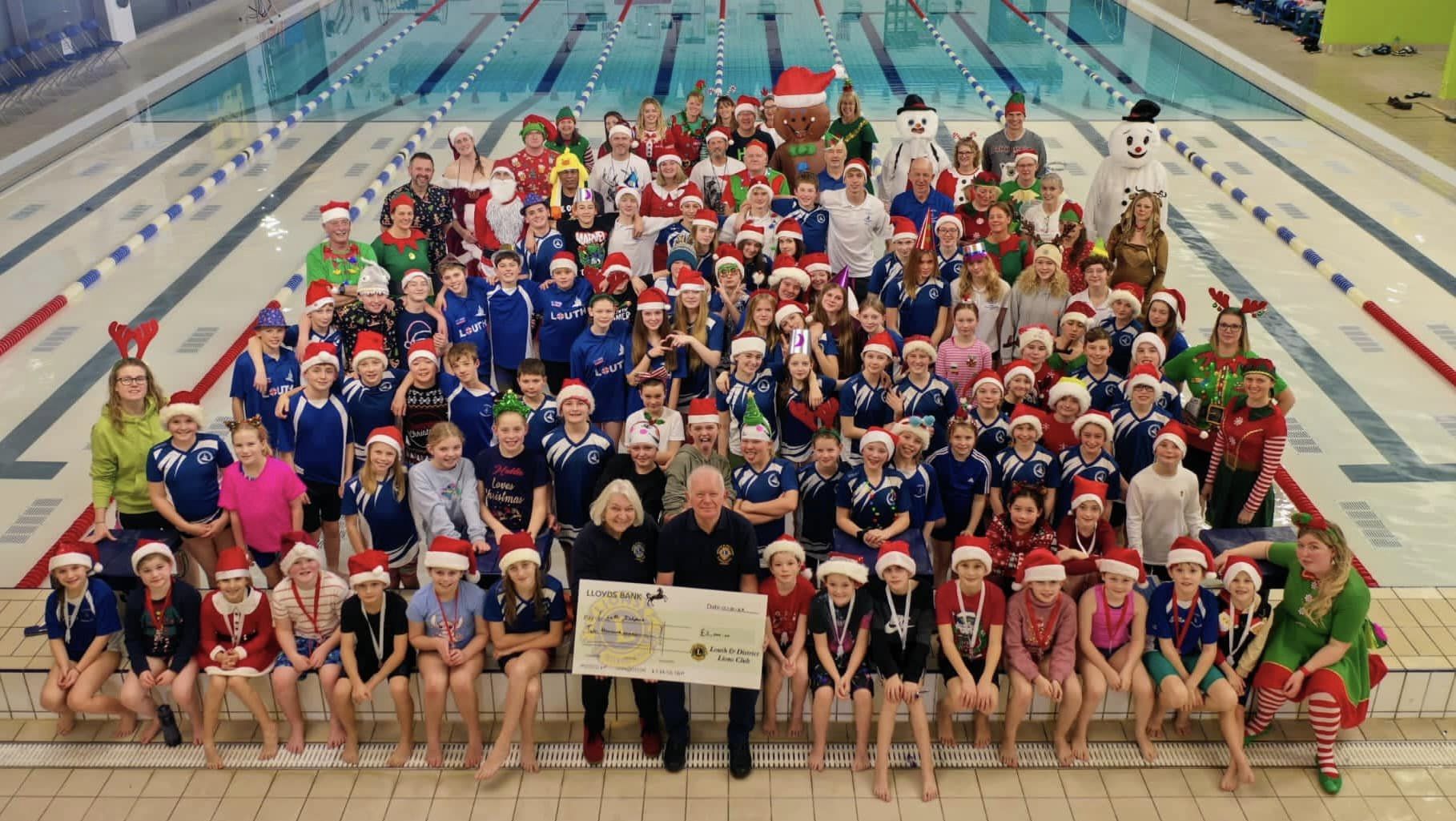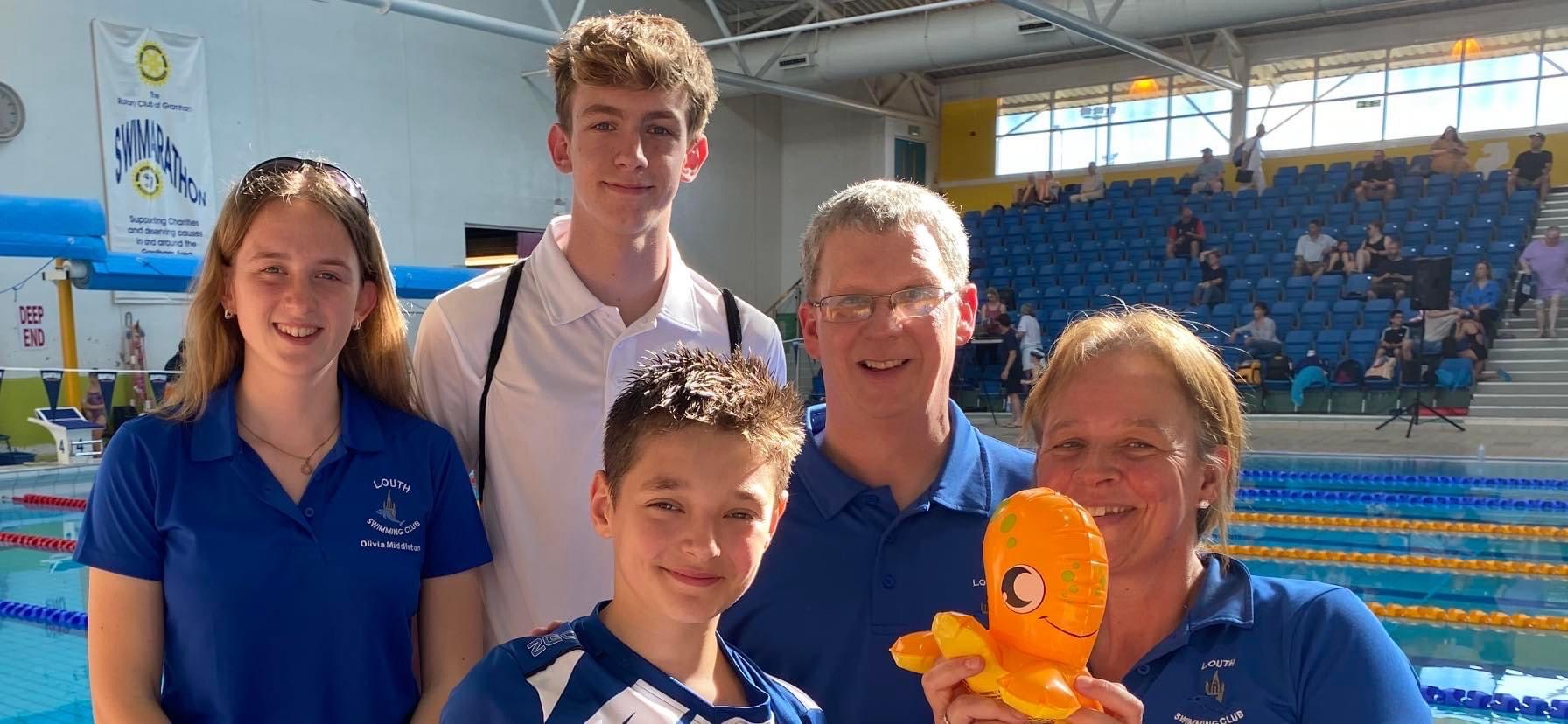
Swimming Glossary & Useful Information The Strokes
Freestyle (abv. Free or F/C) (UK: front-crawl)
Freestyle is the fastest swimming stroke of all. It is used in open water and triathlon swimming. Strictly speaking, freestyle means there are no restrictions on the stroke, so the fastest possible technique is used. The resultant stroke has evolved to be alternate arm strokes using body roll to aid propulsion with one arm while simultaneously aiding recovery of the other. An alternate 'flutter' leg kick is normally used.
Butterfly (abv. Fly)
The fly stroke is a symmetrical stroke with both arms carried over the water on recovery. The stroke uses a dolphin kick (both legs kicking as one together). Fly is challenging and normally only attempted by good intermediate and advanced swimmers. It has benefits for your core conditioning. In competition, the stroke is limited to sprint distances.
Individual Medley (abv. Medley or IM)
A swimming event combining all four of the strokes normally performed in the order fly- back- breast- free. Classic distances are 200m (50m of each stroke) and 400m (100m of each stroke). Designed to find the best all- round swimmer, medley swimming is physically hard due to the fast transitions between strokes. It is commonly used in training swim sets.
Breaststroke
Breastroke requires both arms to move in a synchronised way underwater; whilst the arms are fully stretched out the legs move in a synchronised movement, to push forward the swimmer. There is no body roll in breaststroke and the breath is exhaled whilst the head is under the water.
Backstroke (abv. Back or BK)
The swimmer should be in a streamlined position on their back in the water; eyes should face upwards with the head relaxed. The legs scissor kick under the water and are mainly used for balance. The arms make sweeping actions which give much of the propulsion. The body should roll as the hips move side to side with the leg movement and the shoulders should roll with the action of the arm.
Equipment
Kick Board
A float, normally flat and square, which is traditionally held in front of you in your hands when you are performing kicking drills. The float
gives you the buoyancy to lift your head out of the water.
Paddles
Paddles are training aids held or strapped to the hands whilst swimming. Traditionally they are bigger than the hand and designed to increase grip on the water. They have two purposes; to increase the training forces (and so possibly develop strength) and to give the swimmer a sensation of what it is like to have more grip - as if their catch was better.
Pull buoy
A specially shaped float designed to sit between your legs as high as possible (touching your crotch). The pull buoy provides enough buoyancy that you do not have to kick to keep your body position high. This allows you to focus soley on your arm stroke as you swim. When using one, make sure you keep you core stretched to encourage body roll, it is too easy to become flat and not rotate enough when swimming with a pull buoy.
Swimming Terminology
Drills
Exercises normally performed in the water to practise an aspect of the swimming stroke. These often use fins (flippers) to give additional support and propulsion. An example drill is kicking on your side with one arm out in front of you to become familiar with rotating your body in the water.
Drills are often performed after or as part of the warm-up in a swimming session and should be performed with control, normally at slow training speeds to ensure the drill is accurate.
Drag
How much friction you create in the water whilst you swim. Fast swimmers have low drag and high levels of propulsion. The biggest causes of drag are poor body position and poor kicking technique.
2, 4 or 6 Beat Kick
A description of the kicking technique used when swimming freestyle. 6 beat is the traditional flutter kick and uses 6 kicks per complete arm cycle. This is used by most swimmers and triathletes. A 2 beat kick is 2 kicks per complete arm cycle and is often used by expert distance swimmers and triathletes to reduce the oxygen uptake from their legs.
Catch Up Drill
A drill where one arm is held fully forwards until the other arm has performed a complete stroke and returned to the front. This drill tends to be used during the early stages of learning freestyle timing. After that it encourages poor body rotation.
Technique
Your swimming technique is another term for your swimming stroke. Your swimming speed is much more limited by your technique than your fitness. Because of this, all levels of swimmer should work on their strokes in their swimming sessions and strike a good balance between technique work such as drills and fitness work and fitness training.
Bilateral Breathing
Breathing to both sides, in any pattern. This is a good technique to keep your stroke symmetrical and avoid damage to the neck muscles.
Body Position
How high / horizontal your body sits in the water as you swim. A high body position close to the surface is good. A bad body position normally means your legs and hips are well beneath the surface creating lots of drag.
Body Rotation (=Body Roll)
The rotation of your body along your 'long axis' or spine as you swim. Aim for approximately 45-60°.
Bow Wave
A bow wave is created by your body when you swim, this drops the level of the surface of the water as it passes your head, creating what we call a trough. You can breathe into that trough without lifting your head as much as you might think.
Catch
The catch is the start of the arm stroke at the very front when you start to grip the water and move your hand and arm backwards. The catch is traditionally a mystical concept which even good swimmers find hard to master. Work on your catch when you are a good intermediate or advanced swimmer.
Dolphin Kick
A kick used in the fly stroke where both legs kick in time together. Often employed by advanced freestyle swimmers whilst performing a torpedo kick off the wall after completing a start or a turn.
Extension
The part of your stroke where the hand extends forward after entry into the water.
Feel For The Water
Your ability to catch and pull the water to propel yourself forwards. Most swimmers find this a difficult concept to grasp, but know if their feel for the water has deteriorated as they feel the propulsive forces have dropped.
Glide
The action of coasting with a pause in your stroke. Normally this would be at the point in your stroke where you are on your side with one arm extended out in front of you.
Economy (=efficiency)
How much effort you require to swim at a given speed. With more economy and efficiency you will swim faster for the same effort.
Pace Clock
A traditional swim pacing clock with a double second hand. Experienced swimmers use this to measure their swim times and
recovery periods in sets so that they don't have to wear a watch (which can harm your feel for the water). Since they know approximately their swimming times for various distances they can time themselves over periods much longer than a minute. For instance, if you swim approximately 6:30 for 400m and set off on a red 60 ("red top") and finish on red 20 then you know you've swum 6:20.
Plantar and Dorsi Flexion
Technical terms for pointing your foot (plantar flexion) and flexing it upwards (dorsi flexion). Good kicking technique involves plantar flexion but too many swimmers dorsi flex instead which greatly increases drag.
Propulsion
How much forward drive you generate with your swimming stroke. Largely determined by your ability to catch and pull on the water with good rhythm and timing. Simply put, swimming quickly is about two key elements: great propulsion and low drag.
Pull
The 'pull' phase of the freestyle stroke is performed by the propulsive arm following the catch. It commences just in the front of the head and continues back under the body. The pull phase consolidates a good catch and builds up the propulsion further. If performed well, the pull transfers propulsive power from the core to the water.
Push
The last section of the propulsive phase of the stroke, as the arm and hand pass the lower core and hips. This final drive phase is the most powerful of all the phases but is only really powerful following an effective catch and pull. Concentrating on this push phase can be particularly good if you are trying todevelop a longer stroke and develop more body roll.
Streamline
A body position for minimising drag. The most common being a torpedo push off performed off the wall. This streamlined position allows you to hold your speed off the wall for as long as possible - it's faster than swimming!
S Shaped Pull
The S Shaped Pull involved entering at the front of the stroke with thumb down and palm out, the first action under the water is to sweep outwards in front of the head, then sweep back in past the chest and then finally sweep out again by the hip.
Stroke Abbreviations
BK = Back Stroke BR = Breaststroke Fly = Butterfly
F/C = Front Crawl (aka Free style) IM = Individual Medley
Stroke Length
How far you travel for every stroke you swim is called your stroke length. Generally speaking a long stroke is a good thing, up to a point. Stroke length is normally measured by counting how many strokes (both arms) that you take to travel the length of a pool.
Stroke Rate
How many strokes you take in a minute is called your stroke rate.
Push turn
A turn where the lead arm pushes off the wall, driving the upper body and head over the lower body. Immediately following, the legs push off from the wall to create drive. The alternative turn is a tumble turn where the legs flip over the body before pushing off.
Recovery
The portion of a swimming stroke where the arms move over the surface of the water.
Taper
Backing off your training to freshen up for a big race. A common method is to drop the volume (hours) of training in the week before the big race but keep some intensity to your training to keep your body awake.
Threshold (Lactate)
The speed at which you can swim continuously without lactate build up in your blood stream. The most significant factor in your physiology that determines your speed in distance and triathlon swimming. If your lactate threshold pace is higher your race performances will be faster too.
Tumble (turn)
A tumble turn is one where the head and arms are driven under the body and the legs flip over the top before reaching the wall and pushing off. Sometimes also called a flip- turn. Where allowed, it's used in elite pool swimming as it's the fastest method of turning.
Unilateral (breathing)
Breathing to one side only. Tends to cause asymmetrical strokes over time and is not recommended. Bilateral (breathing) is recommended by us to keep your stroke symmetrical and faster.
Long Course
In competitive swimming, 'long course' means racing in a 50m pool - as used in the Olympic games.
Short Course
In the competitive swimming world, short course is racing in a 25m pool.
A different set of world records is kept for short course as it is faster than long course due to the increased number of push- offs.
Time Trial (abv. TT)
A flat- out test of your speed against the clock. A time trial is an all out effort like a race but normally performed without competition.
Disqualification (=DQ)
Most swimmers get disqualified at some point in their swimming career. Often young swimmers and their parents are unsure of the disqualification rules. Please refer to the document “Disqualification - and how to avoid it“ for a list of the most common reasons for disqualifications.
Disqualification (DQ) - and how to avoid it
Most swimmers get disqualified at some point in their swimming career. Often young swimmers and their parents are unsure of the disqualification rules. Here is a list of the most common reasons for disqualifications:
Disqualification at the start
Moving at the start. After the starter has said “take your marks” swimmers must remain absolutely still on the block or in the water, until the starting signal has sounded. This includes fiddling with goggles. Get into the habit of looking at the water (or wall on backstroke) NOT the starter.
Swimmers should not leave the water at the end of a race until authorised by the Referee. If time pads are being used, swimmers must not climb out over them, but progress under the lane rope(s) and exit at the side of the pool. Swimmers must ensure they do not impede any swimmer in a race (as may occur in a relay) as this will be a disqualification.
Freestyle
-
Swimmers must touch the wall at every turn (ideally with both feet) and with one hand at the finish of the race.
-
Start & Turn – The swimmer must surface at or before 15m.
-
Turn – The swimmer must touch the wall with some part of the body.
-
Swimmers will be disqualified if they take or step/walk on the bottom of the pool, although they can stop and stand still if necessary.
Any stroke can be swum, generally it is front crawl.
Backstroke
-
Start – Feet or toes must not curl over any gutter
-
Start & Turn – The swimmer must surface at or before 15m, and some part of the body must break the surface throughout the race (until the next turn or finish).
-
Body position – Must remain on the back throughout the swim (shoulders must not go beyond vertical), except when executing a turn.
-
Non continuous turning action. Gliding, kicking or pulling into a turn is not permitted.
-
EXCEPT a continuous single or continuous simultaneous double arm pull may be used to initiate the turn.
-
Turn; forward roll – here the swimmer rolls onto the front, takes one stroke then the arms pull them into the turn. There must be no kicking once the arm pull has been completed, and no gliding. This turn must be continuous, and is frequently the reason for disqualification in backstroke.
-
Swimmers must have returned to their backs upon leaving the wall. Do not get into habit of pushing off on side.
-
Swimmers must practice counting how many arm strokes to do from the flags into the turn and at the finish and NOT look for the wall.
-
Finish – Must be on the back, not having the shoulders past vertical (onto the front).
Breaststroke
Incorrect start or incorrect turn.
-
After the start and after each turn, the swimmer may take one arm stroke completely back to their legs. Their head must break the surface of the water before their hands turn inwards at the widest part of their second stroke.
-
A single downward dolphin kick is permitted followed by one breaststroke leg kick while totally underwater.
-
Turn & Finish – Both hands must touch together.
-
All arm and leg movements must be simultaneous and on the same horizontal plane.
-
Body position – the swimmer must remain on the breast.
-
The hands shall not be brought back to the hips other than at the start and turns.
-
2 handed touch, swimmers must touch the wall at the turn and the finish with both hands simultaneously.
-
Feet not dorsiflexed - The feet must be turned outwards during the propulsive phase of the kick.
-
Incorrect kick - No alternating, scissor or butterfly kicking is permitted.
-
Taking two strokes under water at the start or on the turns.
Butterfly
-
Arms not clearing. There should be air between the arms and the water surface throughout the race.
-
Arms must be brought forward together and brought back simultaneously.
-
Alternating legs. Legs must move together and remain in the same relative horizontal plane. (no alternating kick)
-
Incorrect touch. Swimmers must touch the wall at the turn and the finish with both hands simultaneously.
Individual Medley
-
Order of swimming - butterfly, backstroke, breaststroke, freestyle.
-
Make sure you use the correct finish for each stroke i.e., fly – 2 handed touch, backstroke – on the back, breaststroke – 2 handed touch.
-
Do not turn onto the front when performing a backstroke to breaststroke turn, must touch on back and then rotate over onto front. Relays – In general
-
Strokes – These are as per the rules of each stroke.
-
Take Over – The incoming swimmer must touch the wall before the outgoing swimmer’s feet have left the block. There may be movement on the block, but the feet must not leave before the touch.
-
Medley Relay – Must be in the correct stroke order – Backstroke, Breaststroke, Butterfly,
-
Freestyle. Freestyle means any stroke, except Backstroke, Breaststroke or Butterfly
Please feel free to ask any of the coaches or committee if there is anything you do not understand, they are here to help.
 We celebrated some great achievements at our 37th Annual Club Championship Presentation Event
We celebrated some great achievements at our 37th Annual Club Championship Presentation Event Check out our latest SWIMMER OF THE MONTH WINNER
Check out our latest SWIMMER OF THE MONTH WINNER Dolphin's Para-swimmer Harvey Phillips shares his inspirational journey of how aquatics has helped with his confidence and development.
Dolphin's Para-swimmer Harvey Phillips shares his inspirational journey of how aquatics has helped with his confidence and development. We wrapped up 2023 with the exciting Santa Sprints event!
We wrapped up 2023 with the exciting Santa Sprints event! The return of our biggest meet of the year - the Meridian Meet - Vulcans & Dolphins Lev 3 short course!
The return of our biggest meet of the year - the Meridian Meet - Vulcans & Dolphins Lev 3 short course! Our Masters squad gained medals at Championships!
Our Masters squad gained medals at Championships! Congratulations to Bob Wells, for winning the Volunteer Award in the BBC Radio Lincolnshire Make a Difference Awards 2023.
Congratulations to Bob Wells, for winning the Volunteer Award in the BBC Radio Lincolnshire Make a Difference Awards 2023. Finishing 2nd competing against the top club teams in the County.
Finishing 2nd competing against the top club teams in the County. Louth Dolphins awarded £1000 from the LSA
Louth Dolphins awarded £1000 from the LSA